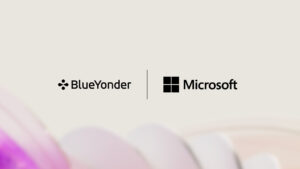
5 questions banks should consider for digital transformation
 Banks have seen dramatic technology advancements across the business, particularly in payments. In this blog, we sat down with Peter Hazou, business strategy leader of worldwide financial services at Microsoft, and Dean Wallace, practice lead for real-time and digital payments at ACI Worldwide, to discuss digital transformation in the financial services industry and five questions to consider when approaching your strategy, including important topics like competing for market share, open banking, ISO20022, and more.
Banks have seen dramatic technology advancements across the business, particularly in payments. In this blog, we sat down with Peter Hazou, business strategy leader of worldwide financial services at Microsoft, and Dean Wallace, practice lead for real-time and digital payments at ACI Worldwide, to discuss digital transformation in the financial services industry and five questions to consider when approaching your strategy, including important topics like competing for market share, open banking, ISO20022, and more.
To compete in today’s competitive landscape, banks need to modernize their older technology to be agile and data-centric. At what stage are they in this modernization process to your experience?
Hazou: Priorities have shifted in the last few years. Now, nearly all banks are focusing on infrastructural upgrades to their core systems. In the previous, say, 10 years, improving customer experience was the top priority, largely because it was an area non-bank fintech competitors saw that traditional banks were the most vulnerable to disruption. The trend and investments have now shifted to the modernization of the underlying systems supporting these data-centric, front-end user experiences.
Wallace: A few years ago, I would have said banks are struggling with modernization, but as things stand today, I believe many of them are making tremendous progress. A lot of financial institutions are driving forward with improved digital enablement layers to bring new propositions and value to their customers.
When it comes to payments, we see that many banks are working towards the consolidation of payment types into some sort of hub capability. They are removing legacy infrastructure and aiming to build an always-on digitized infrastructure. What do you think about this?
Hazou: Over the years, with the growth of requirements on financial services firms, banks grew by adding features and functionality onto their legacy infrastructures. This layering of ever-larger product catalogs onto older systems created a sprawl of interconnected modules and feeder systems that are expensive to maintain and inflexible for remediation. The resulting complexity is reliable, but at a high expense and with very poor time-to-market in meeting new client requirements. One of the main trends today, especially with larger multi-geographic banks, is to consolidate all of this into new cloud-based payment hubs that are agile and fit to compete in the new economy.
Wallace: Some banks are a lot further on in this process than others. Those that are still behind are often struggling to find their own “niche” in the new world, which is applaudable, but these same banks are struggling with a long-term vision to match their desires, and they tend to overstretch where they want to get to, neglecting some basics along the way: namely, that they need the right baseline in the first place, and that’s why they are lagging. The legacy way of thinking is still prevalent among many banks. Dabbling along the way is a good idea: try, fast fail, learn, try the next one, etc. But those catching up need to be careful they don’t set their long-range goal on the ideas coming out from “dabbling,” they need to get the fundamentals right first.
With bank budget plans now by and large set for 2021, what do you think the top priorities are for payment modernization?
Hazou: Cutting through a number of forces at play, I would say that agility is the overarching goal. It enables banks to reduce run-the-bank costs through more flexible technology and testing, and it permits banks to prepare for the uncertainties of the road ahead post-COVID-19. We live in a data culture and a digital world where all of the signals that pass through the banking system have value to clients and indeed the bank itself. No longer are payments just about processing widgets, the game has moved on and data insights are the main priority in payments.
Wallace: Banks are investing in real-time—we see this around the world. Many of them already have real-time capabilities or they are planning to launch them soon. Real-time is a catalyst and will have a knock-on effect on how everything else works in the bank. More importantly, real-time enables new digital payment layers and capabilities, such as Request-to-Pay services that many banks are investing in. And once you have the fundamentals right, you can start layering on value-added services: for example, plugging in digital capabilities from fintech or carving out capabilities from vendor partners or from your own back-office asset pool.
ISO20022 is more than a compliance necessity. Where are bank businesses in terms of use case development with their customers?
Hazou: Banks are not thinking broadly enough about the potential ISO standard machine-readable XML payments will bring them in serving their clients and transforming their business models. Big tech and fintech competitors in financial services are all in the data game while banks are treating one of the greatest industry initiatives around data as a compliance activity rather than a fundamental development of their value proposition. This requires thinking beyond yesterday’s challenges, like how to better reconcile payments and invoices, and more about how broad sets of connected data can bring real insights and value. Part of this may mean thinking beyond the confines of traditional bank P&Ls, like payment processing, and more about the value chain of activities in both commerce and family life. Artificial intelligence (AI) and machine learning (ML) for financial services allow banks to broaden how they serve clients in open banking economies. To learn more about ISO 20022, read our blog, Harnessing the opportunity of ISO20022 for financial services organizations.
Wallace: ISO 20022 is a baseline need; the mandate is out there, and all banks need to do it before the end of 2022. Banks are certainly busy when it comes to updating their infrastructure for the new requirements. In terms of use cases and the question of how to mine and analyze the data and transform the insights into new customer propositions, many financial institutions are still at the very beginning of that process and still have a lot to do.
How do you think data will change the payments industry?
Hazou: Non-bank competitors recognize payments as merely a medium for gathering data signals and insights, rather than a standalone fee-based business. This is challenging for the traditional way in which banks have viewed their P&L growth since the dawning of transactions banking as a fee-generating product business in the 1980s. Beyond financial crime prevention, which is the first and best use case for data, banks have tremendous client franchises and domain experience in financial services for which data is the central element. Improved risk models based on real-time data and predictive analytics will be the first big step forward. Beyond that, the role of banks as data aggregators and creators of value-added services provides a tremendous and lucrative trajectory in an open banking economy.
Wallace: For years, we have talked about data, but in my opinion, very few banks have a very strong vision in this respect. Banks are beginning to think about it. Many of them are bringing the outside skills in, and we will hopefully see some new ideas and propositions emerging on that front soon.
Additional Microsoft resources
To access additional resources and learn how financial services is transforming digitally using technologies from Microsoft and our solutions from our partners, visit our banking, capital markets, and insurance home pages.




